We are excited to share about past and future barn tours and barn grant opportunities!
Author: Multiple Authors (Page 1 of 2)
This post has been co-authored by several members of the PA SHPO Staff.
Are you ready to put PA-SHARE in your pocket and start documenting Pennsylvania’s historic places and archaeological sites?
The PA SHPO is pleased to introduce its newest set of tools to conduct both above ground and archaeological survey in Pennsylvania – the PA-SHARE Surveyor suite.
Continue readingPA-SHARE is an innovative platform designed to streamline project submissions. PA-SHPO’s staff, key stakeholders and digital experts came together to design an online system to unite data sources, streamline systems, reduce unnecessary searching, and speed reviews.
One of the great results? Surveyor, a mobile tool that is like having PA-SHARE in your pocket.
Another great result? Increased efficiency for all of us, which is one of the 4 great reasons to make PA-SHARE part of your plan.
Continue readingPHMC’s former Executive Director and State Historic Preservation Officer, Jim Vaughan, passed away on Thursday, April 23, 2020.
Continue readingOn October 3rd, 2018, the Pennsylvania State Historic Preservation Office (PA SHPO) hosted a demonstration workshop to explore resiliency options for Mather Mill, a National Register–listed gristmill constructed ca. 1820 in Whitemarsh Township, Montgomery County.
The workshop was conducted as part of PA SHPO’s Disaster Planning for Historic Properties (DPHP) initiative, a program developed with a grant from the National Park Service that is made available to states impacted in 2012 by Hurricane Sandy.
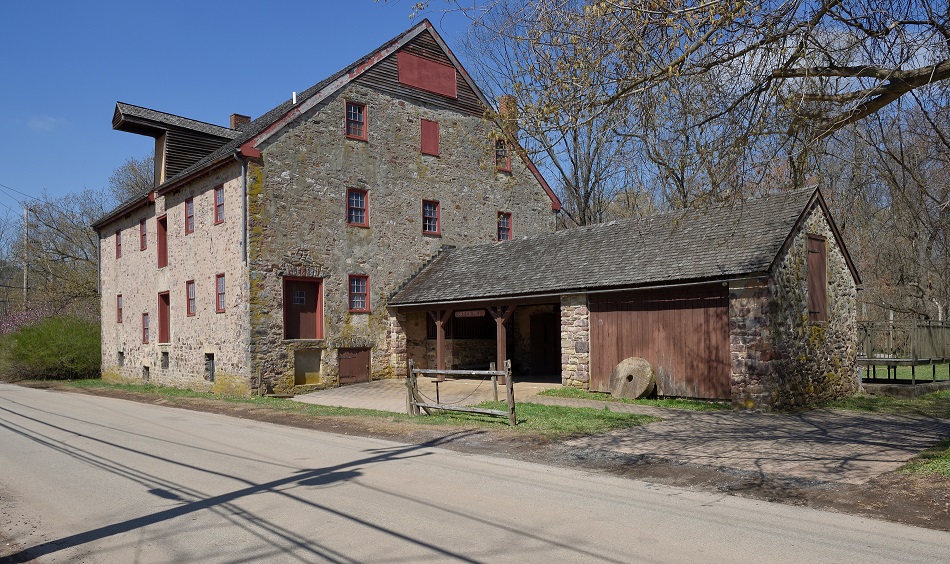
This demonstration workshop provided an opportunity for PA SHPO to narrow its focus. The office invited architecture and planning firms from throughout the region to attend a one-day workshop dedicated to learning about a single, specific property—its particular history, risks and opportunities—and brainstorm possible resiliency solutions and ways to scale them to other at-risk properties.
Mather Mill
Mather Mill, our target property for this workshop, is a Commonwealth-owned property in need of a new use. It’s also representative of a common property type that is, by definition, near and potentially at risk from water. Both the mill and nearby properties are in the 100-year floodplain, and the mill has flooded several times since the Commonwealth acquired it in 1966. The Commonwealth plans to eventually transfer ownership of the property but no specific client or program currently exists.
A property immediately across Mathers Lane that was recently acquired by Whitemarsh Township was included as part of the workshop’s scope. After two flood-prone buildings were demolished, the property is now subject to Federal Emergency Management Agency deed restrictions that require it to remain as open space. This does allow for some minimal development supporting continued use of the property as open space.
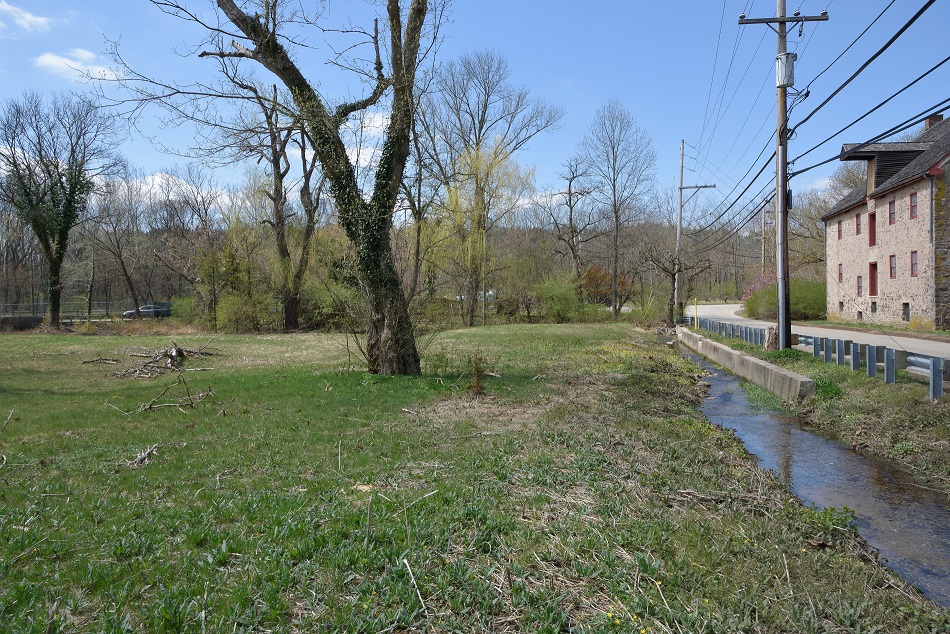
The Workshop
The day of the workshop started with an introduction to the DPHP program from PA SHPO director Andrea MacDonald. Presentations included a brief overview of the National Park Service’s standards and guidelines for rehabilitating historic properties, contextual background on the Wissahickon Valley Watershed, and floodproofing techniques and how they might impact historic properties.

In addition to the subject matter experts who gave presentations, a few more people were available for an afternoon discussion:
- Two members of the Friends of Hope Lodge, which manages the historic Georgian mansion Hope Lodge in nearby Fort Washington and also cares for Mather Mill for PHMC, provided an on-the-ground perspective and possible options for the mill’s future use.
- Justin Spangler, a water resources engineer with LandStudies Inc., spoke at length about floodplain restoration, and his input spurred an extended conversation.
- Ernie Szabo, from the Pennsylvania Emergency Management Agency (PEMA), talked about flooding in Pennsylvania and PEMA’s programs.
The quality of a discussion like this is a direct result of the people involved, and they provided a valuable source of information that had not been specifically addressed in the morning presentation.
Homework
Following the workshop, the firms were given two weeks to create design proposals for use and resiliency at Mather Mill and suggest strategies for scaling those proposals to other at-risk properties. The firms were given substantial format flexibility. We wanted to see a variety of design approaches, visual styles, and ways of prioritizing the issues at play.
PA SHPO received materials from five firms:
- Mark B. Thompson Associates of Philadelphia,
- Seiler + Drury Architecture of Norristown,
- BWA Architecture + Planning of Philadelphia,
- Heritage Design Collaborative of Media, and
- Vitetta of Harrisburg.
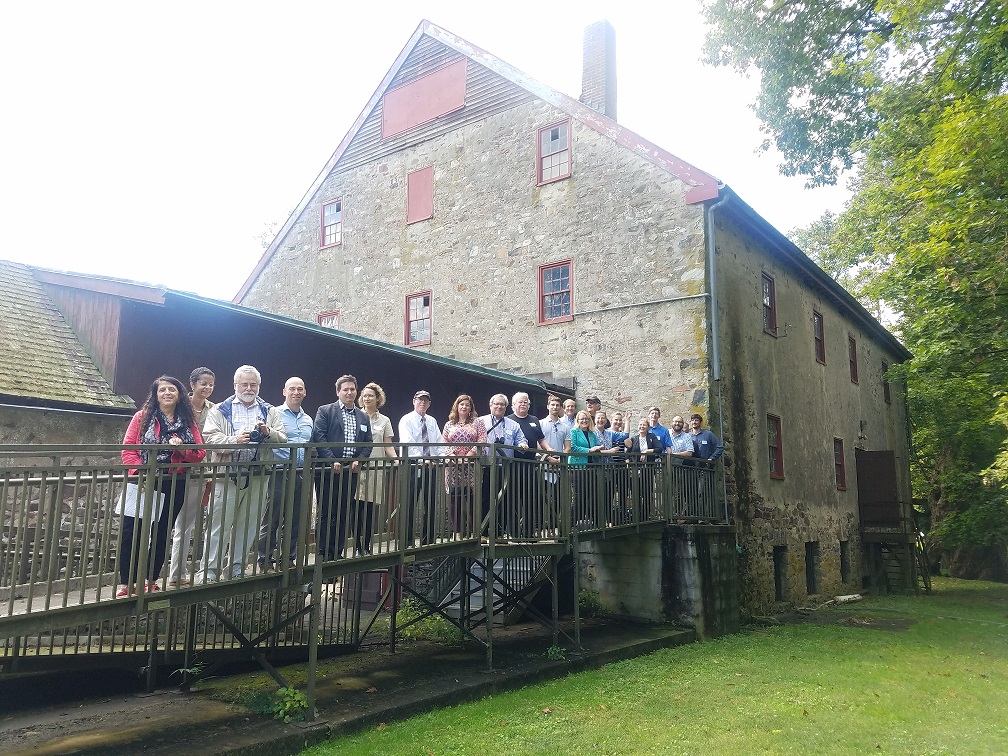
To learn more about the Mather Mill designs, check out its record in our online CRGIS system. All six proposals are uploaded and available.
SHPO’s Design Proposal
In addition to the participating firms, Shawn Massey, Architectural Designer here at the SHPO, also produced a design proposal. Here is what he had to say:
“The focus of my design board of Mather Mill was to reconnect the once thriving physical partnership of the neighboring waterway back with the abandoned mill. My design reopened the raceway so the water of the Wissahickon Creek could once again occupy the mill in a way that would create new experiences for the supportive users. This new revived raceway and creek way would be dug deeper so that boaters, fishermen, and other water activity enthusiasts could interact with the mill in a unique new way. This raceway would be an entry/rest/exit point for the users of the creek, site, and building, while also starting to deal with the flooding issues that put a dark cloud over the site.
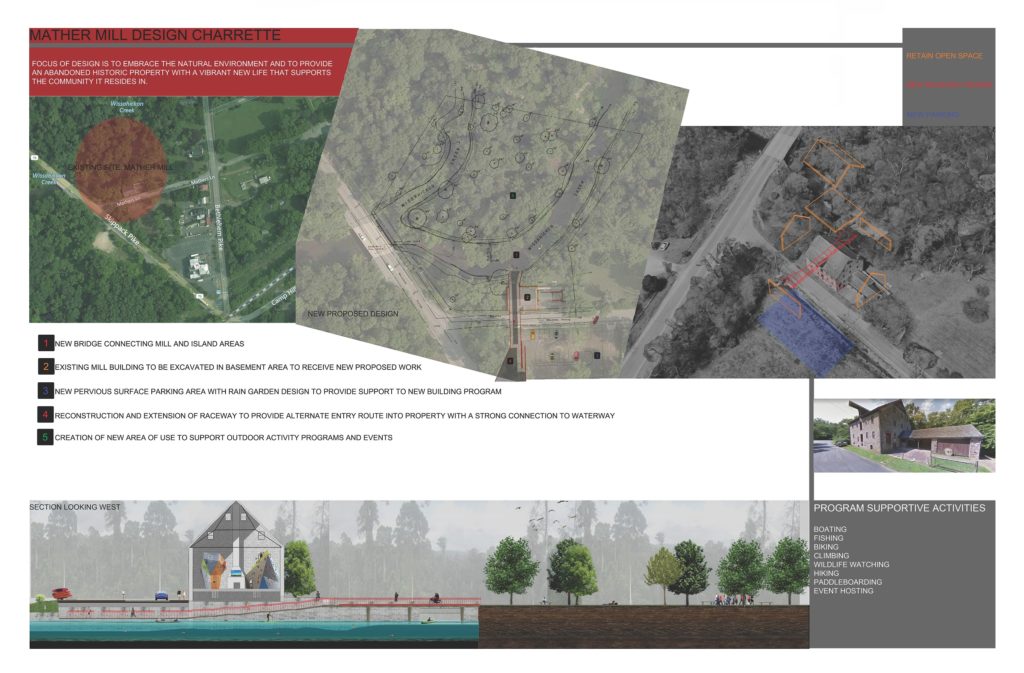
Another part of the design was a new pervious parking lot across the street that would support the above-mentioned new circulation points along with making it much safer to access the mill and the surrounding land. The design also included a bridge from the mill to reconnect the neighboring island area to allow for outdoor activities and events.
Not only did the design deal with natural environment factors but it also gave Mather Mill a supportive interior program. The interior was proposed in the design to be a community gathering space where climbing walls, skateboard ramps, and other public events could be held. This would allow the mill to retain its existing open space with minimal edits to the historic structure. I believed with support from the surrounding community organizations this may be a viable use for a historical mill that needs to be brought back to life.”
Open House
In November, the proposed materials were presented to the public at an open house event in Whitemarsh Township.
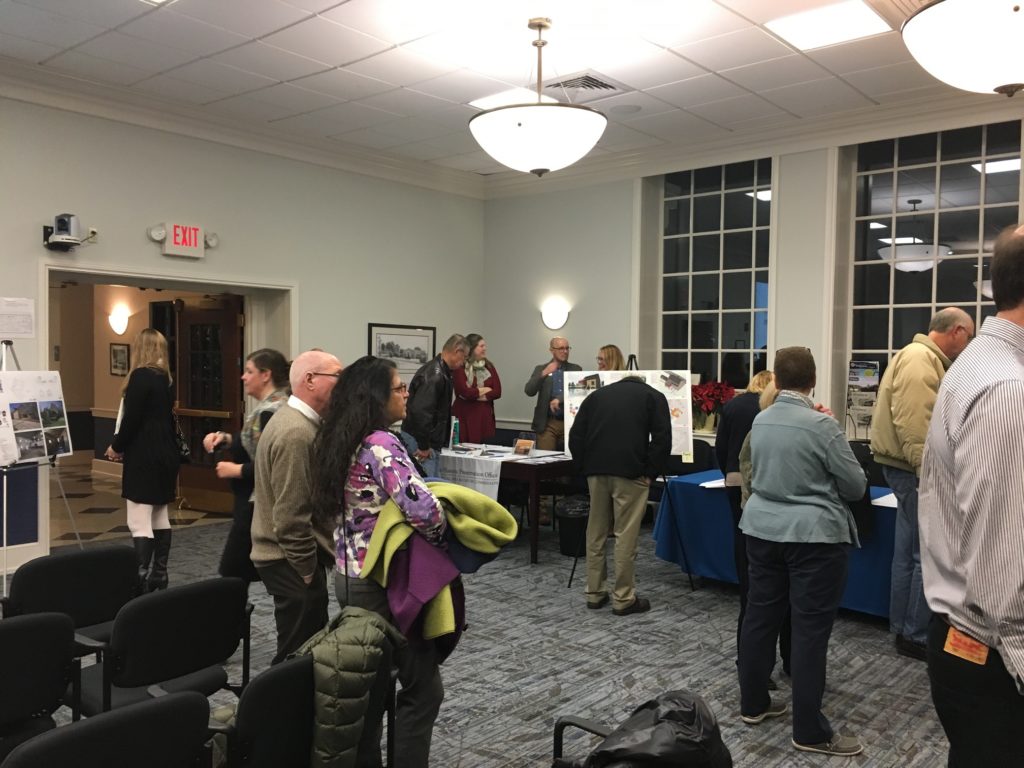
More to come!
While the question of how to scale resiliency solutions received less focus than solutions specific to Mather Mill, it remains PA SHPO’s central concern.
Later this month, PA SHPO will be partnering with the City of Philadelphia on a second workshop in the city. A second workshop allow us to continue exploring these solutions. Keep an eye out for more information; we will be scheduling a public open house for later in the year to showcase the results of our second workshop. The best way to be “in the know” about opportunities like our open houses is to sign up for our e-news.
John Gardosik manages the Disaster Planning for Historic Properties Initiative for the Pennsylvania State Historic Preservation Office. Shawn Massey is PA SHPO’s Architectural Designer.

Caring for African American Cemeteries with PA Hallowed Grounds
Throughout Pennsylvania, African American burial grounds are often lost or destroyed due to lack of permanent markers and documentation, dwindling community presence and awareness of the cemetery’s existence, vandalism, land ownership disputes, and a host of other issues to which their sensitive nature renders them vulnerable. Continue reading
There are always lots of “Things You Need to Know” in today’s world, and this week’s post features a few from our Environmental Review staff, Barbara Frederick and Doug McLearen.
Online Data Entry for Above Ground Resources
We’ve been talking about PA-SHARE for quite a while now, and we here at the PA SHPO have been changing how we operate to “model the work” to be ready when PA-SHARE is launched. How newly identified resources are submitted for review is one of those things we’ve been changing.
As we announced in early July, submissions including 10 or more newly identified resources are required to be electronically entered into CRGIS. Data entry has been well received! Thank you!
We would also like to encourage those submitters sending in projects with fewer than 10 newly identified resources to use online data entry as well.
As outlined in the updated Interim Guidelines for Above Ground Environmental Review, the process is generally the same and only varies slightly depending on the number of resources being submitted. There is some greater flexibility in the submission process:
- Submitters of less than 10 newly identified resources are to notify the appropriate above ground environmental reviewer when resources are ready for review and comment via email rather than by mail.
- Also, a table of the results of the identification effort is not required when there are fewer than 10 newly identified resources; providing the project’s Environmental Review (ER) number and the names and key numbers of resources whose data entry has been accepted by CRGIS staff as part of request to review and comment is sufficient.
Archaeology for new cell towers

Example of a cell phone tower.
It is the PA SHPO’s position that the majority of proposed new cell tower sites in Pennsylvania are commonly located in areas where significant archaeological resources are not likely to be present. Exceptions to this pattern are:
- when the Area of Potential Effect (APE) for direct effects is located on or adjacent to a previously recorded archaeological site, either pre-contact or historic; or
The APE is in a similar topographic setting as that of a previously recorded pre-contact archaeological site or otherwise associated with topographic and environmental factors that typically favor the locations of pre-contact sites; or
- when the APE has a high probability of containing historic archaeological resources based on a historical association such as buildings shown a historic map, presence of historic buildings on-site, or location in a historic district.
The FCC Nationwide Programmatic Agreement (NPA) requires that their applicants’ submission packets provide a justification for a finding that no archeological survey is necessary. If results of a thorough desktop review are provided to our office, they must contain clear, descriptive information as to why it is unlikely that archaeological resources are present. If a field visit/ survey is also undertaken—which is usually the case–the packet should then present the results.
When no archaeological resources are found in a survey, and/or the entire APE for direct effects is found to be disturbed:
- PA SHPO considers these surveys to constitute field checks rather than conventional Phase I archeological surveys. In these instances, the production of a full archaeology report will not be required. For convenience, however, the applicant should use the PA SHPO’s Negative Survey Form or, if more appropriate, the PA SHPO’s Record of Disturbance.
If a field survey does identify an archeological site within the APE for direct effects:
- PA SHPO expects the applicant’s consultant to prepare a full Phase I archeological report in complete accordance with the instructions in Guidelines for Archaeological Investigations in Pennsylvania (PA SHPO 2016). The PA SHPO will then review and comment on the finding and continue to consult with the applicant on National Register eligibility and effects.
The PA SHPO forms and documents named above can be found on the PHMC web site at: https://www.phmc.pa.gov/Preservation/About/Pages/Forms-Guidance.aspx.
We know it can be hard to keep track of all these changes, so please give us a call or send us an email with any questions!
Doug McLearen, Division Chief, can help with archaeology-related questions: dmclearen@pa.gov.
Barbara Frederick, Supervisor, can help with above-ground resources questions: bafrederic@pa.gov.
It may be the time of year when we all joke around and partake in fun pranks to celebrate April Fools Day, but we’re not joking when we say that your life is about to get easier. Why? Electronic submissions and online data entry! Continue reading
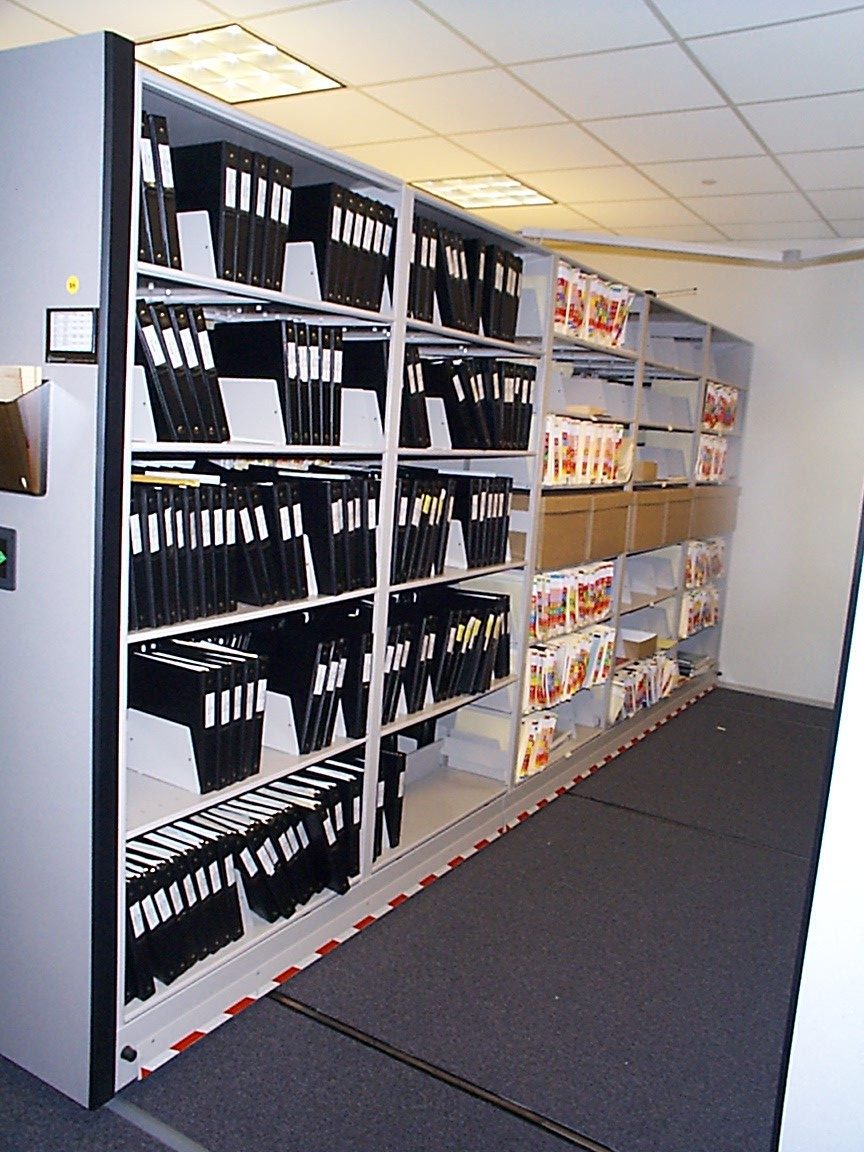
Sharing PA-SHARE
Over its 50 years of operation, the PA State Historic Preservation Office (PA SHPO) has produced and received a large and varied quantity of archival materials.
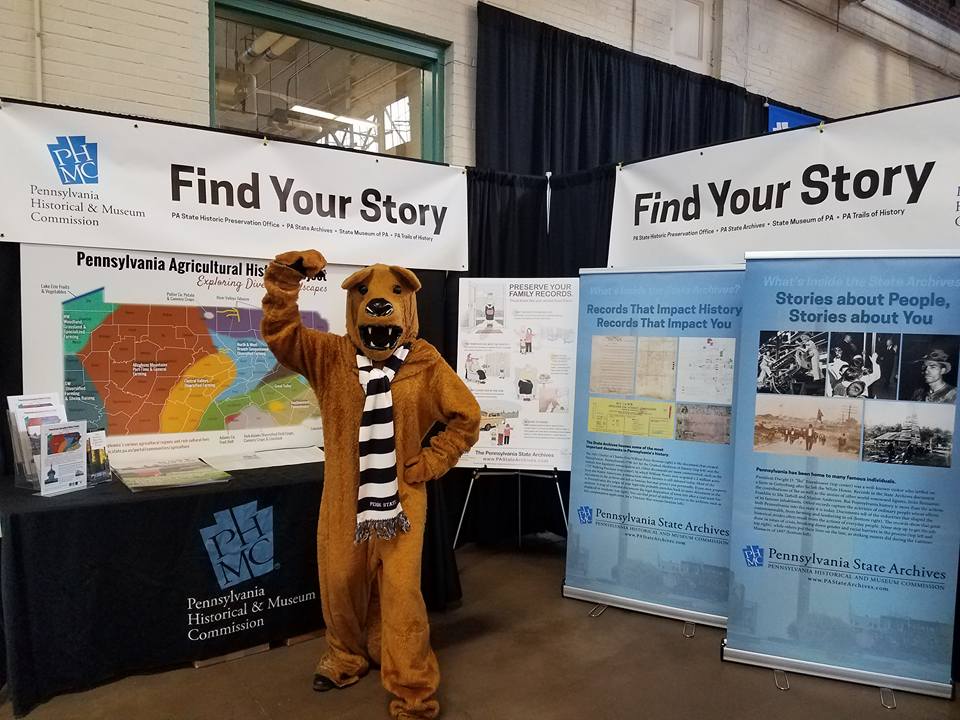
Dig into Your Roots at the 2018 Farm Show
So, you are enjoying the delights of the Farm Show and you misplaced your spouse and kids. Where to find them? At the Pennsylvania Historical & Museum Commission booth at the 2018 Farm Show? Maybe not, but you might find older generations of your family there. Continue reading
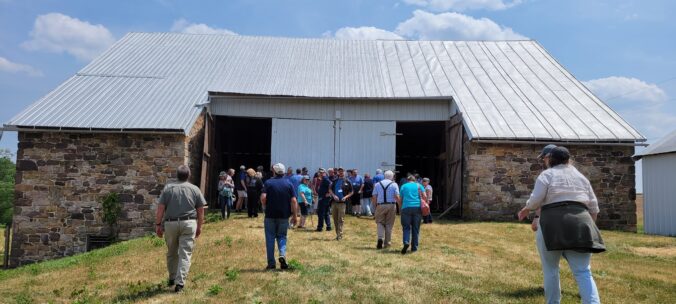





Recent Comments